Do you have a question about the MSI B150M MORTAR and is the answer not in the manual?
Covers handling, wrist straps, and anti-static measures to prevent component damage.
Covers connecting components, power, humidity, temperature, and troubleshooting scenarios.
Step-by-step visual guide for CPU installation, including socket lever and retention mechanism.
Demonstrates how to correctly insert RAM into DIMM slots and secure them.
Illustrates placing the motherboard into the computer case and securing it with screws.
Demonstrates installing a graphics card into a PCIe slot and securing it.
Details the 24-pin (JPWR1) and 8-pin (JPWR2) power connectors for the motherboard.
Guides on connecting the power cord and turning on the computer.
Details alignment notches and the Pin 1 indicator for CPU installation.
Important notes on handling, heatsinks, thermal paste, and socket protection.
Advises using DIMM2 slot first and discusses memory capacity limits.
Details the 24-pin (JPWR1) and 8-pin (JPWR2) ATX power connectors.
Explains pin assignments for front panel switches and LEDs.
Using DEL key, F11 key, or MSI FAST BOOT application to access BIOS.
Procedures for clearing CMOS via jumper, button, or F6 key.
Instructions for updating BIOS using M-FLASH and Live Update 6.
Enabling MSI Fast Boot, Fast Boot, and Secure Boot functionalities.
Full Screen Logo, GO2BIOS, NumLock, and AUTO CLR_CMOS settings.
Selecting boot mode (Legacy/UEFI) and setting boot device order.
Setting admin/user passwords and TPM configuration.
Configuring OC modes and CPU ratio application for overclocking.
Adjusting CPU, Ring, and GT ratios for performance tuning.
Configuring EIST, Turbo Boost, and Extreme Memory Profile (XMP).
Configuring DRAM frequency, timings, and advanced settings.
Memory fast boot, CPU/DRAM/PCH voltage settings.
Settings for Hyper-Threading, Active Cores, CPUID, and Execute Disable Bit.
C-State, C1E, Adaptive Thermal Monitor settings for power saving.
Setting power limits, EIST, Turbo Boost, FCLK, and DMI speed.
Step-by-step guide for updating BIOS via USB flash drive.
Saving, loading, clearing, and naming overclocking profiles.
Displays current system temperatures and fan speeds.
Adjusting fan curves based on temperature using Smart Fan mode.
Steps for installing Windows 7, 8.1, or 10.
Procedures for installing system drivers and software utilities from the disc.
Introduction to the software's features and layout for system tuning.
Controls for CPU fan speed and voltage settings.
Utilizing GAME BOOST and monitoring thermal sensors.
Step-by-step guide for updating system components using the utility.
Overview of the XTU interface and its main sections for system tuning.
Adjusting CPU parameters and monitoring system performance.
Entering and using the IRST Option ROM for RAID management.
Detailed procedure for creating a new RAID volume, including level, strip size, and capacity.
Resolving issues like no power, no signal, or failure to boot.
Addressing network, USB, and audio problems.
Covers handling, wrist straps, and anti-static measures to prevent component damage.
Covers connecting components, power, humidity, temperature, and troubleshooting scenarios.
Step-by-step visual guide for CPU installation, including socket lever and retention mechanism.
Demonstrates how to correctly insert RAM into DIMM slots and secure them.
Illustrates placing the motherboard into the computer case and securing it with screws.
Demonstrates installing a graphics card into a PCIe slot and securing it.
Details the 24-pin (JPWR1) and 8-pin (JPWR2) power connectors for the motherboard.
Guides on connecting the power cord and turning on the computer.
Details alignment notches and the Pin 1 indicator for CPU installation.
Important notes on handling, heatsinks, thermal paste, and socket protection.
Advises using DIMM2 slot first and discusses memory capacity limits.
Details the 24-pin (JPWR1) and 8-pin (JPWR2) ATX power connectors.
Explains pin assignments for front panel switches and LEDs.
Using DEL key, F11 key, or MSI FAST BOOT application to access BIOS.
Procedures for clearing CMOS via jumper, button, or F6 key.
Instructions for updating BIOS using M-FLASH and Live Update 6.
Enabling MSI Fast Boot, Fast Boot, and Secure Boot functionalities.
Full Screen Logo, GO2BIOS, NumLock, and AUTO CLR_CMOS settings.
Selecting boot mode (Legacy/UEFI) and setting boot device order.
Setting admin/user passwords and TPM configuration.
Configuring OC modes and CPU ratio application for overclocking.
Adjusting CPU, Ring, and GT ratios for performance tuning.
Configuring EIST, Turbo Boost, and Extreme Memory Profile (XMP).
Configuring DRAM frequency, timings, and advanced settings.
Memory fast boot, CPU/DRAM/PCH voltage settings.
Settings for Hyper-Threading, Active Cores, CPUID, and Execute Disable Bit.
C-State, C1E, Adaptive Thermal Monitor settings for power saving.
Setting power limits, EIST, Turbo Boost, FCLK, and DMI speed.
Step-by-step guide for updating BIOS via USB flash drive.
Saving, loading, clearing, and naming overclocking profiles.
Displays current system temperatures and fan speeds.
Adjusting fan curves based on temperature using Smart Fan mode.
Steps for installing Windows 7, 8.1, or 10.
Procedures for installing system drivers and software utilities from the disc.
Introduction to the software's features and layout for system tuning.
Controls for CPU fan speed and voltage settings.
Utilizing GAME BOOST and monitoring thermal sensors.
Step-by-step guide for updating system components using the utility.
Overview of the XTU interface and its main sections for system tuning.
Adjusting CPU parameters and monitoring system performance.
Entering and using the IRST Option ROM for RAID management.
Detailed procedure for creating a new RAID volume, including level, strip size, and capacity.
Resolving issues like no power, no signal, or failure to boot.
Addressing network, USB, and audio problems.
| Chipset | Intel B150 |
|---|---|
| Form Factor | Micro ATX |
| Socket | LGA 1151 |
| Memory Slots | 4 x DIMM |
| Maximum Memory | 64 GB |
| Storage Interfaces | 6 x SATA 6Gb/s |
| M.2 Slots | 1 x M.2 |
| Integrated Graphics | Depends on CPU |
| Memory Speed | 2133 MHz |
| PCIe Slots | 1 x PCIe 3.0 x16, 2 x PCIe 3.0 x1 |
| USB Ports | 6 x USB 3.1 Gen 1, 6 x USB 2.0 |
| Video Outputs | 1 x HDMI, 1 x DVI-D, 1 x VGA |
| Audio | Realtek ALC892 |
| LAN | Realtek RTL8111H Gigabit LAN |
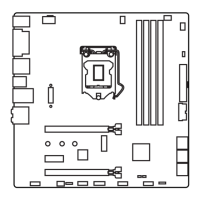



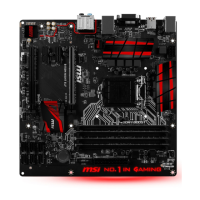
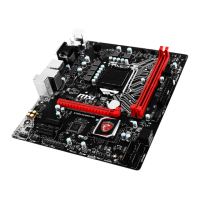
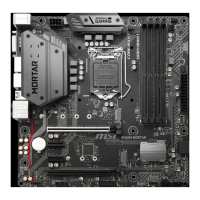
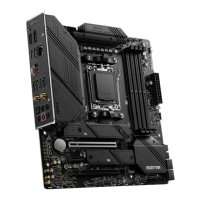
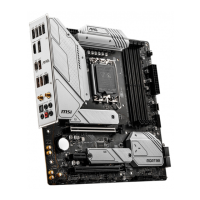
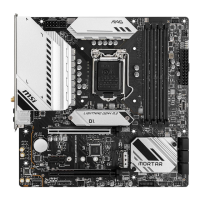

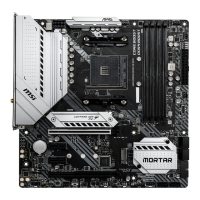
